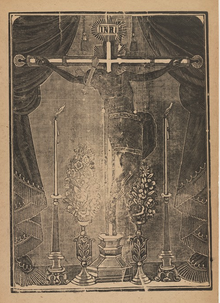La Calavera Garbancera later renamed Calavera Catrina and later still simply La Catrina was and is a political warrior who arose as a truth-teller from the sharp mind and pen of satirist and political cartoonist José Guadalupe Posada (1851–1913) who became known for using skulls and bones to critique government corruption and call out inequities between the rich and the poor. He also used her to poke fun at Mexicans of Native heritage who strove to look European (in particular, French), focused on acquiring wealth and status, and turned their back on their community and Indigenous values. Posada added Garbancera to her name as a way of calling out Indigenous Mexicans who set aside eating sacred corn to eat European garbanzo beans/chickpeas.
The use of a skeleton by Posada in political flyers was to make it clear that we are all the same beneath the veneer of clothing, politics, ethnicity, poverty, class, education, or affluence. Death comes to all. She is the great equalizer.
Vocabulary:
Calavera, Skull
Esqueleto, Skeleton or in slang usage as in a skeleton in your closet
Catrina, a woman who dressed ostentatiously, particularly dressing beyond their means
Catrin, a male; a dandy (see Catrina, above)
Garbancera, chickpea eater (garbanzo beans)
“Posada called his satire La Calavera Garbancera and intended to poke at the elite of Mexico by depicting Natives washing out or negating their Native roots for that of a European one. The white face painting is said to be the act of trying to be White. Get it? Regardless of what you wear or how White you try to dress and be, your bones are native.” — Mariana Aguilera, The Demureist. "Posada began publishing and distributing frequent volantes (flyers). He used the medium to continue to puncture the egos and expose the foibles and serious crimes of government and social figures of the day. During a time when many in Mexico were illiterate, the message of political cartoons could be easily understood even without reading the articles. Many credit Posada with raising the political and social consciousness of the peón (common laborer), exposing social injustice at a time when most at that level were blind to it." "Over the course of the rest of his career, it is estimated that the prolific Posada published as many as 20,000 political volantes, at a penny apiece, including many thousands that were illustrated by calaveras." https://themazatlanpost.com/2018/10/29/dancing-with-death-jose-guadalupe-posada-and-the-history-of-the-catrina/
"... But it wasn’t until 1910, some thirty years after his first drawings of the calaveras, that he made the headshot engraving of the now-famous figure, La Catrina. At that time, Posada called the lady skeleton La Calavera Garbancera (The Chickpea Skeleton). The drawing, and the name, were a direct satire on the pretentious indigenous group of people who masqueraded as the new European bourgeoisie during the last days of the decaying empire of president Porfirio Díaz. These people were often seen selling roasted chickpeas (garbanzos) on the street corners of wealthy districts."
— Mexicolore "In 1945-47, the great Mexican muralist Diego Rivera painted a mural of famous Mexicans in a hotel restaurant next to the Alameda Central Park in Mexico City. He included himself, his wife Frida, and La Calavera Garbancera. “Sueño de una tarde dominical en la Alameda Central” (Dream of a Sunday Afternoon in the Alameda Central) made Posada’s Catrina even more famous."
This piece was first published on October 24, 2021.

Detail from Diego Rivera’s Dreams of a Sunday Afternoon in Alameda Central Park from the Diego Rivera Mural Museum











Commenti